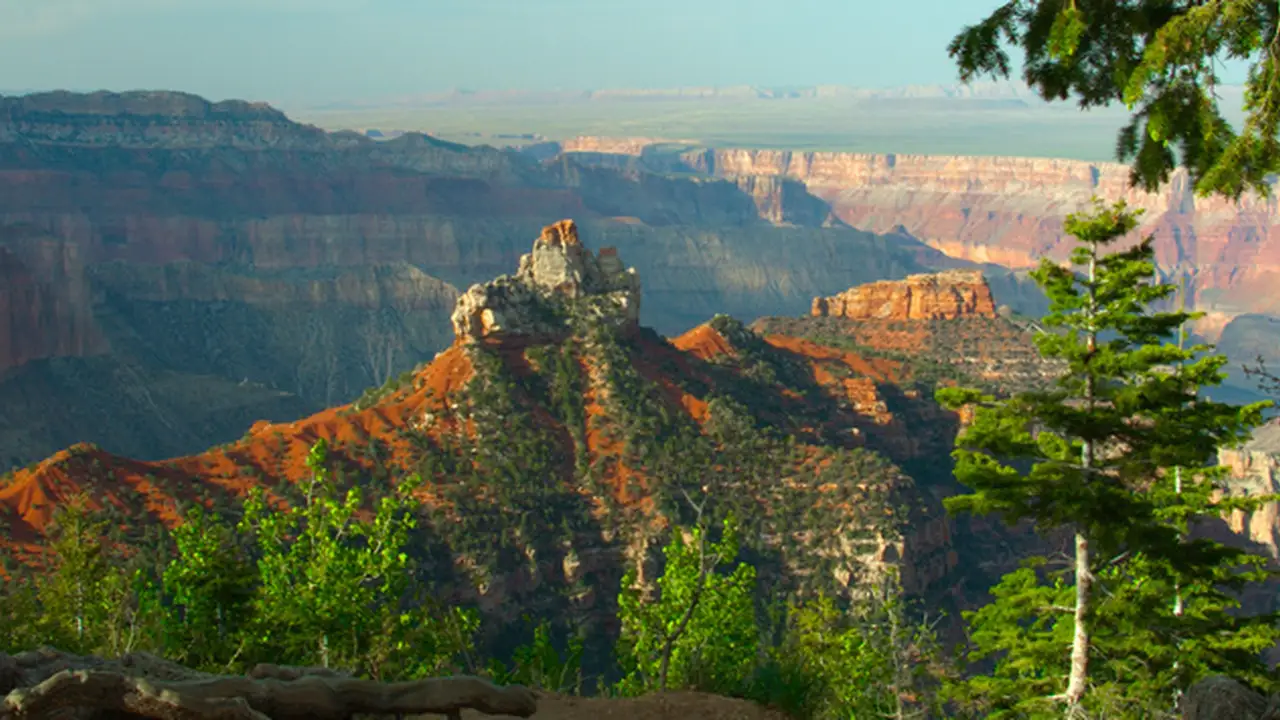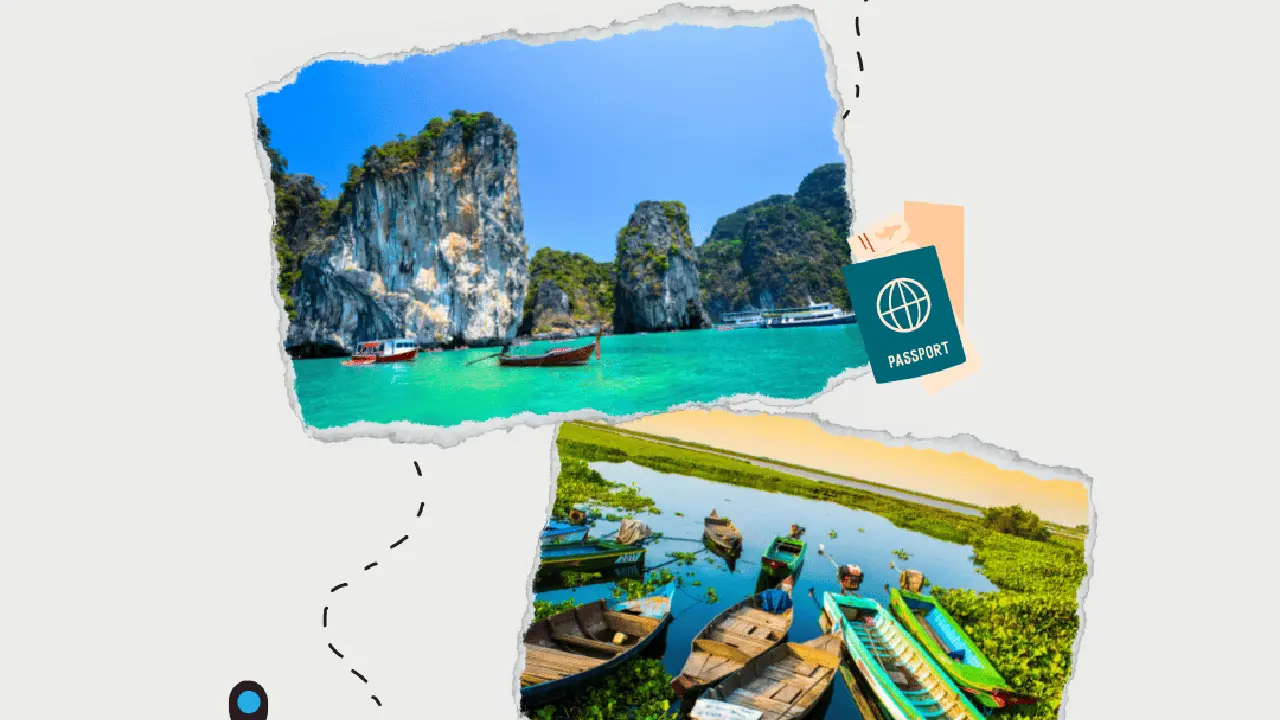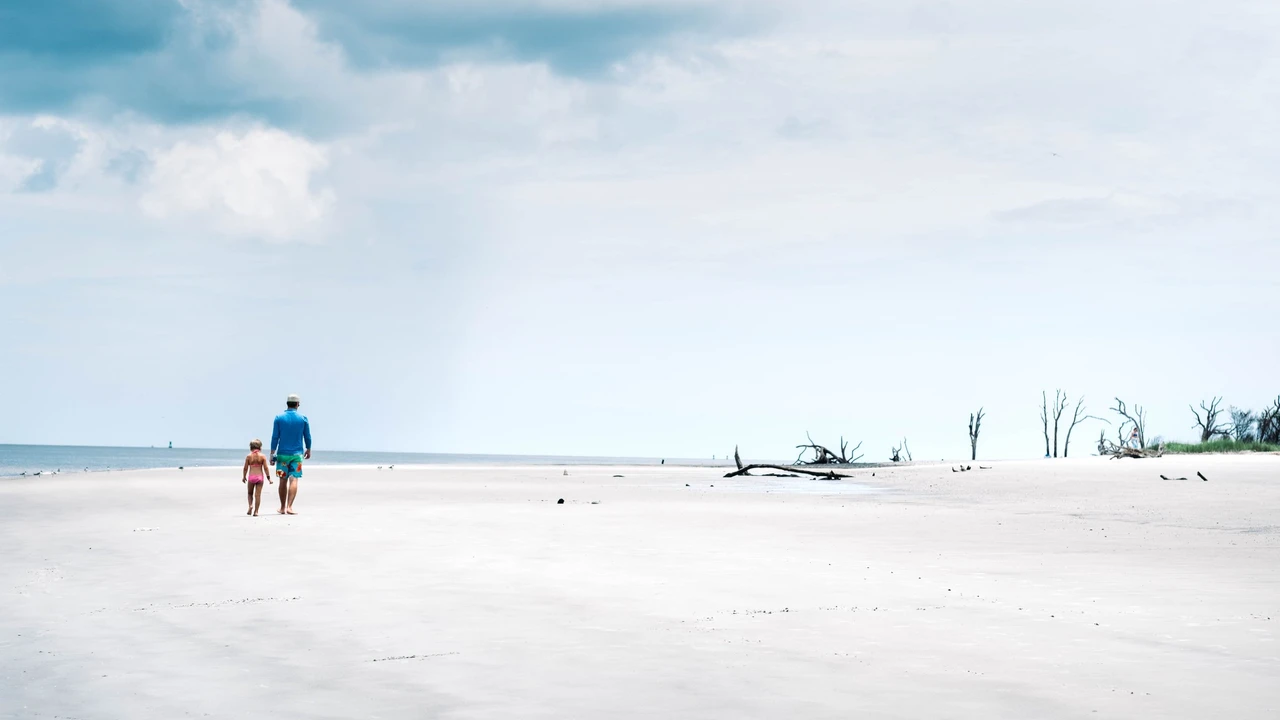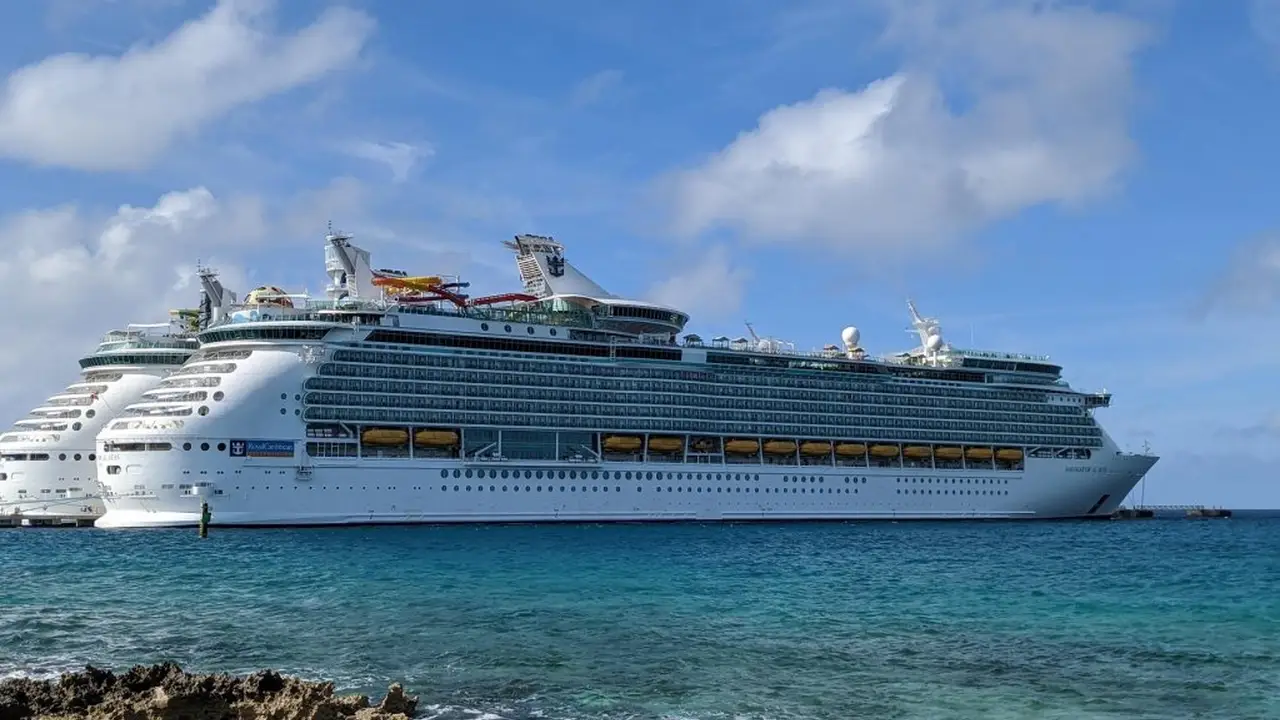Exploring the Grand Canyon_ A Beginner's Guide
Embark on an unforgettable journey to the Grand Canyon with our beginner's guide. We cover the best viewpoints, hiking trails, and activities. Experience the awe-inspiring beauty of this natural wonder.

Planning Your Grand Canyon Trip Essential Information
Okay, so you're thinking about visiting the Grand Canyon? Awesome choice! It's one of those places that truly lives up to the hype. But where do you even start? This guide is designed for first-timers, so we'll cover everything from when to go to what to pack.
Best Time to Visit the Grand Canyon Weather and Crowds
The Grand Canyon is open year-round, but the best time to visit depends on what you want to do and how you feel about crowds. Spring (March-May) and Fall (September-November) offer the most pleasant weather, with mild temperatures and fewer crowds than the summer months. Summer (June-August) is hot, especially down in the canyon, but it's also when all the facilities are open. Winter (December-February) can be cold and snowy, but it's a magical time to see the canyon dusted with snow. Just be aware that some trails and roads may be closed due to weather.
Choosing Which Rim South Rim vs North Rim
The Grand Canyon has two main rims: the South Rim and the North Rim. The South Rim is open year-round and is the most popular choice, offering stunning views, numerous trails, and plenty of amenities. The North Rim is higher in elevation and only open from mid-May to mid-October. It offers a different perspective of the canyon and is generally less crowded, but it's also more remote.
Grand Canyon Viewpoints Best Scenic Overlooks
One of the main draws of the Grand Canyon is, well, the views! Here are a few viewpoints you absolutely can't miss:
Mather Point Iconic Grand Canyon Views
Mather Point is located near the South Rim Visitor Center and offers panoramic views of the canyon. It's a great spot to get your bearings and take some iconic photos. It can get crowded, especially during peak season, so try to arrive early or late in the day.
Yavapai Geology Museum Grand Canyon Geology Information
Yavapai Point is located near the Yavapai Geology Museum and offers stunning views of the canyon and the Colorado River. The museum is worth a visit to learn about the canyon's geological history.
Desert View Watchtower Grand Canyon Eastern Views
Located on the East Rim Drive, the Desert View Watchtower offers panoramic views of the canyon and the surrounding landscape. The tower was designed by architect Mary Colter and is a National Historic Landmark.
Hopi Point Grand Canyon Sunset Views
Hopi Point is a popular spot for watching the sunset over the Grand Canyon. It's located on the West Rim Drive and offers stunning views of the canyon bathed in golden light.
Grand Canyon Hiking Trails Beginner Friendly Options
Want to get a closer look at the canyon? Hiking is the way to go! Here are a few beginner-friendly trails:
Bright Angel Trail Grand Canyon Hiking Challenge
The Bright Angel Trail is a classic Grand Canyon hike, but it's also challenging. Don't attempt to hike to the river and back in one day! A better option for beginners is to hike down to the 1.5-mile Resthouse or the 3-mile Resthouse and then turn around.
South Kaibab Trail Grand Canyon Steep Descent
The South Kaibab Trail is another popular option, but it's even steeper than the Bright Angel Trail. Again, don't attempt to hike to the river and back in one day! Hike down to Ooh Aah Point (0.9 miles roundtrip) for stunning views, or go a bit further to Cedar Ridge (3 miles roundtrip).
Rim Trail Easy Paved Grand Canyon Trail
The Rim Trail is a paved, mostly flat trail that runs along the South Rim. It's perfect for a leisurely stroll and offers stunning views of the canyon. You can hop on and off the free shuttle bus at various points along the trail.
Grandview Point Trail Historic Grand Canyon Hike
This trail is shorter but steeper than the other rim hikes. It offers fantastic views but can be challenging for some beginners. Be sure to bring plenty of water.
Grand Canyon Activities Beyond Hiking
The Grand Canyon offers more than just hiking and sightseeing. Here are a few other activities to consider:
Grand Canyon Mule Rides Unique Experience
Mule rides are a classic Grand Canyon experience. You can ride down into the canyon on a mule, but be prepared for a long and bumpy ride. Reservations are required well in advance.
Grand Canyon Helicopter Tours Aerial Views
A helicopter tour is a great way to see the Grand Canyon from a different perspective. You'll get aerial views of the canyon and the surrounding landscape. Tours depart from nearby airports.
Grand Canyon Rafting Trips Colorado River Adventures
Rafting the Colorado River through the Grand Canyon is an unforgettable adventure. Trips range from one day to several weeks. Reservations are required well in advance.
Grand Canyon Stargazing Night Sky Viewing
The Grand Canyon is a great place for stargazing. The dark skies offer stunning views of the Milky Way and other celestial objects. Ranger-led stargazing programs are available.
Essential Gear for Your Grand Canyon Trip What to Pack
Packing the right gear is essential for a safe and enjoyable Grand Canyon trip. Here are a few must-have items:
Hiking Boots Comfortable and Supportive Footwear
If you plan on doing any hiking, comfortable and supportive hiking boots are essential. Make sure they're broken in before your trip to avoid blisters. I highly recommend the Merrell Moab 2 Vent Mid Hiking Boot. They offer great support, breathability, and are relatively affordable at around $100. For a more premium option, consider the Salomon X Ultra 4 Mid GTX Hiking Boot, priced around $150, known for its excellent grip and waterproofing.
Water Bottle Hydration is Key
Staying hydrated is crucial, especially during the hot summer months. Bring a reusable water bottle and refill it whenever possible. The Hydro Flask 32 oz. Wide Mouth is a popular choice, known for its insulation and durability, priced around $45. A more budget-friendly option is the Nalgene Tritan 32 oz. Water Bottle, which is lightweight and durable, costing around $12.
Sunscreen Protection from the Sun
The sun is intense at the Grand Canyon, so sunscreen is essential. Choose a broad-spectrum sunscreen with an SPF of 30 or higher. I recommend Neutrogena Ultra Sheer Dry-Touch Sunscreen SPF 55, which is lightweight and non-greasy, priced around $10. For a mineral-based option, consider Badger Balm SPF 30 Unscented Sunscreen, which is environmentally friendly, costing around $15.
Hat and Sunglasses Sun Protection
A hat and sunglasses will help protect you from the sun. Choose a wide-brimmed hat for maximum coverage. A good pair of sunglasses will help protect your eyes from UV rays.
Layers Weather Changes Quickly
The weather at the Grand Canyon can change quickly, so it's important to dress in layers. Bring a lightweight jacket or fleece, even in the summer. In the winter, you'll need warm layers, including a hat, gloves, and scarf.
Grand Canyon Safety Tips Staying Safe
The Grand Canyon is a beautiful but potentially dangerous place. Here are a few safety tips to keep in mind:
Stay on Marked Trails Avoid Getting Lost
Stay on marked trails and avoid shortcuts. Getting lost in the Grand Canyon can be dangerous, especially if you're not prepared.
Bring Plenty of Water Hydration is Essential
Bring plenty of water and drink it frequently. Dehydration is a serious risk at the Grand Canyon, especially during the summer months.
Watch for Wildlife Observe from a Distance
Watch out for wildlife, including squirrels, deer, and snakes. Do not feed the animals, as this can make them dependent on humans. Observe wildlife from a safe distance.
Be Aware of the Weather Conditions Change Quickly
Be aware of the weather conditions and be prepared for changes. Afternoon thunderstorms are common in the summer. In the winter, be prepared for cold temperatures and snow.
Tell Someone Your Plans Safety First
Tell someone your plans before you go hiking. Let them know where you're going and when you expect to be back. This will help ensure that someone knows to look for you if you get lost or injured.
Grand Canyon Accommodation Options Where to Stay
There are several lodging options inside and outside the park:
Lodges Inside the Park Convenience and Views
Lodges inside the park offer the most convenient access to the canyon. Options include El Tovar Hotel (luxury), Bright Angel Lodge (historic), and Yavapai Lodge (more budget-friendly). Book well in advance, as these fill up quickly.
Hotels Outside the Park More Affordable Options
Hotels outside the park are generally more affordable. The town of Tusayan, just south of the South Rim entrance, offers several hotel options. Williams, Arizona, is about an hour south of the park and offers a wider range of lodging and dining options.
Camping Inside the Park Under the Stars
Camping is a great way to experience the Grand Canyon. Campgrounds inside the park include Mather Campground and North Rim Campground. Reservations are required, especially during peak season.
Getting to the Grand Canyon Transportation Options
Getting to the Grand Canyon can be done in several ways:
Driving Your Own Car Scenic Route
Driving is the most common way to get to the Grand Canyon. The South Rim is about a 4-hour drive from Phoenix and a 5-hour drive from Las Vegas. The North Rim is more remote and requires a longer drive.
Flying to Nearby Airports Save Time
You can fly into nearby airports, such as Phoenix Sky Harbor International Airport (PHX) or McCarran International Airport (LAS) in Las Vegas. From there, you can rent a car and drive to the Grand Canyon.
Taking a Bus Tour Relax and Enjoy the Ride
Several bus tour companies offer tours to the Grand Canyon from Las Vegas and other cities. This is a convenient option if you don't want to drive.
:max_bytes(150000):strip_icc()/277019-baked-pork-chops-with-cream-of-mushroom-soup-DDMFS-beauty-4x3-BG-7505-5762b731cf30447d9cbbbbbf387beafa.jpg)






